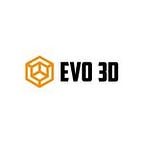Pellet Additive Manufacturing: An Overview for Better Understanding
Additive manufacturing, more generally referred to as 3D printing, has revolutionized several industries by making it possible to produce intricate and unique products with ease. While most standard 3D printing techniques use printers that use a filament, a new technology called pellet additive manufacturing (PAM) presents a possible substitute.
Instead of a filament, pellet 3D printing uses microscopic granules of raw material as its feedstock. We will exaine the benefits and drawbacks of pellet additive manufacturing in this post, focusing on SLA 3D printers in particular.
How pellet 3D printing works
Printing with pellets uses the same material extrusion process that underlies well-known FDM 3D printing. The distinction is in the type of thermoplastic utilized to construct the parts, and as a result, uses a unique extruder created to process plastic granules rather than FDM filament.
It makes sense to skip the filament manufacturing process and print directly with granular material, even if the plastic filament is made up of pellets. Since pellets must be heated to form filaments, which results in the degradation of thermoplastic characteristics, this not only enables material cost reduction but also improves material quality.
Advantages of Pellet Additive Manufacturing
Cost Efficiency
Cost-effectiveness is one of the main benefits of a pellet 3D printer. Pellets are a cost-effective alternative for mass production because they are often less expensive than filaments. Additionally, using pellets minimizes overall material costs because they are simple to measure, store, and reuse.
Material Diversity
Comparatively speaking, printing with pellets offers a broader range of materials than printing with filaments. With pellets, it becomes feasible to utilize a wider variety of materials, including engineering-grade plastics, composites, and even metals. This adaptability creates new opportunities for sectors of the economy that demand specialized qualities from the products they 3D-print.
Enhanced Mechanical Properties
The use of pellets enables more precise material composition control, resulting in enhancing the mechanical qualities of printed items. Manufacturers can achieve specific properties like improved strength, flexibility, or heat resistance by altering the ratio of additives or reinforcements in the pellets. Because of this, applications requiring crucial performance and durability can benefit from pellet additive manufacturing.
Scalability
Due to its potential for large-scale production, pellet 3D printing has scalability advantages. Compared to printing with filament, using pellets allows for faster print speeds and higher deposition rates. Manufacturers can make goods more quickly as a result, increasing productivity and cutting down on manufacturing delays.
Limitations of Pellet Additive Manufacturing
Equipment Requirements
Pellet 3D printing requires specific equipment designed to handle pellets effectively. Pellet printers frequently require specialized hardware upgrades, whereas the modification of filament-based printers is simple to adapt to other materials. It may raise setup costs at first and restrict access for some users.
Surface Quality and Precision
Pellet additive manufacturing can occasionally produce parts with somewhat worse surface quality and precision when compared to filament-based printers. The final print’s surface finish may need additional post-processing operations, including sanding or polishing, due to the pellets’ erratic size and form.
Pellet printers may make it harder to print delicate features and intricate detailing.
Material Handling and Storage
Pellets might be trickier to handle and store than filament spools. Pellets are prone to absorbing moisture, which can negatively affect the material performance and the quality of prints. Therefore, proper storage conditions, such as airtight containers or desiccant solutions, are necessary to maintain the pellets’ integrity.
Additionally, rigorous feeding systems are needed to maintain a steady and dependable material flow throughout the conversion of pellets into usable feedstock.
Learning Curve
Pellet additive manufacturing is still a relatively new technology compared to traditional filament-based printing. As a result, setting up and optimizing pellet printers may involve a longer learning curve for operators and technicians.
Achieving consistent and high-quality prints requires training and experience with handling pellets, altering parameters, and debugging particular problems.
Pellet additive manufacturing has benefits and drawbacks for 3D printing, particularly in the context of SLA 3D printers. While it has advantages in terms of cost-effectiveness, material diversity, improved mechanical qualities, and scalability, there are drawbacks in terms of equipment needs, surface quality, material handling, and the technology’s learning curve.
These restrictions are anticipated to be overcome as pellet 3D printing research and development progress, making this creative technique a practical and worthwhile choice for numerous businesses looking to make use of additive manufacturing’s advantages.
